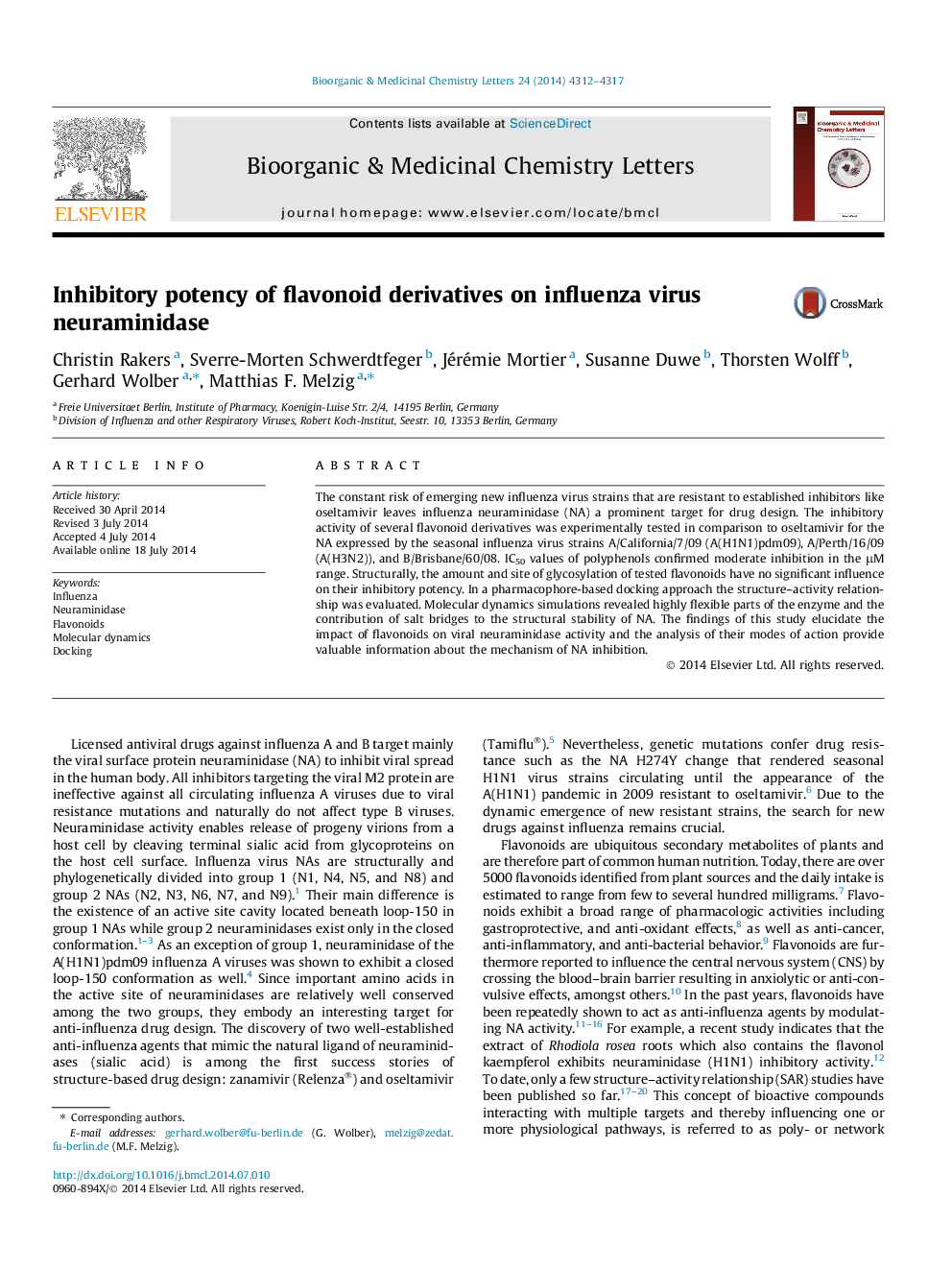| Article ID | Journal | Published Year | Pages | File Type |
|---|---|---|---|---|
| 10591006 | Bioorganic & Medicinal Chemistry Letters | 2014 | 6 Pages |
Abstract
The constant risk of emerging new influenza virus strains that are resistant to established inhibitors like oseltamivir leaves influenza neuraminidase (NA) a prominent target for drug design. The inhibitory activity of several flavonoid derivatives was experimentally tested in comparison to oseltamivir for the NA expressed by the seasonal influenza virus strains A/California/7/09 (A(H1N1)pdm09), A/Perth/16/09 (A(H3N2)), and B/Brisbane/60/08. IC50 values of polyphenols confirmed moderate inhibition in the μM range. Structurally, the amount and site of glycosylation of tested flavonoids have no significant influence on their inhibitory potency. In a pharmacophore-based docking approach the structure-activity relationship was evaluated. Molecular dynamics simulations revealed highly flexible parts of the enzyme and the contribution of salt bridges to the structural stability of NA. The findings of this study elucidate the impact of flavonoids on viral neuraminidase activity and the analysis of their modes of action provide valuable information about the mechanism of NA inhibition.
Related Topics
Physical Sciences and Engineering
Chemistry
Organic Chemistry
Authors
Christin Rakers, Sverre-Morten Schwerdtfeger, Jérémie Mortier, Susanne Duwe, Thorsten Wolff, Gerhard Wolber, Matthias F. Melzig,
